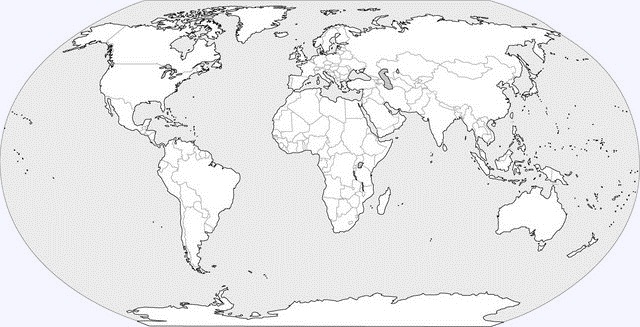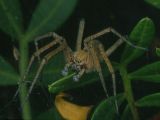|
Nombre común en ingles:
Comb-Tailed Spiders
Nombre común en castellano:
Se desconoce
Familias similares:
Género tipo:
Hahnia C. L. Koch, 1841
Diagnosis:
Small araneomorph spiders; three
tarsal claws; ecribellate; entelegyne; eight eyes; situated in
transverse row; tracheal spiracles open midway on abdomen.
Caracteres descriptivos:
Caparazón:
than wide, narrowed in cephalic region; fovea short with striae. Esternón:
truncated anteriorly; posterior apex narrowing to a point. Ojos:
eight; in two rows (4:4); equal in size; eye rows slightly
procurved. Quelíceros: with two teeth on each side of
cheliceral furrow; lateral side of chelicerae with a stridulating
organ composed of a series of ridges more strongly developed in
males. Piezas bucales: labium wider than long. Patas:
three claws; short, robust, with few setae; trichobothria in a row. Palpo femenino:
with mostly toothless claw. Abdomen: oval. Hileras:
in a single transverse row; posterior spinnerets long,
two-segmented; colulus paired. Sistema respiratorio:
two booklungs; tracheal spiracle midway between genital opening and
base of spinnerets. Genitalia: entelegyne; epigyne flat and
simple, entrance ducts usually strongly coiled; male palp with
tibial apophysis long and curved; patella usually with a basal hook;
embolus thin; median apophysis reduced. Tamaño corporal:
3-6 mm. Color: carapace light to dark brown with dark
pattern, margined with black; abdomen usually with a double row of
oblique pale markings on a grey background; general appearance often
juvenile-like.
Estatus taxonómico:
Hahniidae was established by Bertkau (1878). However, Simon (1897)
only recognised it as a subfamily within the Agelenidae. Lehtinen
(1967) widened the limits of Hahniidae, recognised three
subfamilies, Hahniidae, Cryphoecinae and Cybaeolinae, and placed
them within the superfamily Amaurobioidea. However, Coddington &
Levi (1991) placed them in them in the Dictynoidea, but the
placement of the family remains doubtful.
Distribución: mundial.

Estilo de vida: Contruct
delicate sheet webs near the soil surface. Commonly found in
forested areas.
Bibliografía:
-
Bennett, R.G. 2005c.
Hahniidae. pp. 95-101 in Ubick, D., Paquin, P., Cushing, P.E. &
Roth, V. (Eds) 2005. The Spiders of North America. An Identification
Manual. American Arachnological Society.
-
Dippenaar-Schoeman, A.S. & Jocqué,
R. 1997. African Spiders: An Identification Manual. Plant Protection
Res. Inst. Handbook, no. 9, Pretoria, 392 pp.
-
Forster, R.R. 1970.
The spiders of New Zealand. Part III. Otago Mus. Bull. 3: 1-184.
-
Jocqué, R. & Bosmans,
R. 1982. A new Hahnia from Ivory Coast with a note on stridulating
organs in the Hahniidae (Araneida). Bull. Br. arachnol. Soc. 5:
319-323.
-
Lehtinen, P.T. 1967.
Classification of the cribellate spiders and some allied families,
with notes on the evolution of the suborder Araneomorpha. Ann. Zool.
Fenn. 4: 199-468.
-
Opell, B.D. &
Beatty, J.A. 1976. The Nearctic Hahniidae (Arachnida: Araneae).
Bull. Mus. comp. Zool. Harv. 147: 393-433.
5 géneros y 10 especies presentes en la Península Ibérica:
|
| |
- A. elegans
(Blackwall, 1841) |
|
| |
- C. silvicola
(C. L. Koch, 1834) |
|
| |
- D. pyrenaea
(Simon, 1898) |
|
| |
- H. candida
Simon, 1875 |
| |
- H. hauseri
Brignoli, 1878 |
| |
- H. helveola
Simon, 1875 |
| |
- H. montana
(Blackwall, 1841) |
| |
- H. nava
(Blackwall, 1841) |
| |
- H. ononidum
Simon, 1875 |
| |
- H. petrobia
Simon, 1875 |
|
| |
- I. mazarredoi
Simon, 1881 |
| |
|
 |